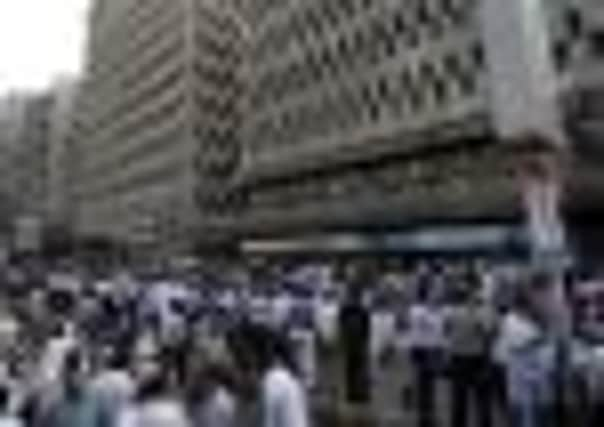‘Massive’ earthquake hits Iran, few casualties reported


Communications with the area, a sparsely populated desert and mountain region, were largely cut and hindered preliminary reports of casualties in Iran. An Iranian provincial governor later said there were no reports of deaths there so far.
Tehran’s Geophysics Centre said the quake, measuring at least magnitude 7.7, lasted 40 seconds. It called it the strongest in more than 50 years. Iran’s Press TV called it “massive”.
Advertisement
Hide AdAdvertisement
Hide AdThe epicentre was far from any of Iran’s nuclear facilities but the quake – the second in the country in a week – was a reminder of how tremor-prone the region is, a factor behind concerns about safety at Iran’s only nuclear power plant.
“Our staff were in a meeting and we felt the ground shake,” said Saleh Mangi, programme unit manager for child development group Plan International in the Pakistani town of Thatta.
“It was horrible – even the cupboards were shaking. This is the strongest quake I have felt since the 1980s.”
Pakistani officials said at least eight people were killed and 20 injured in the town of Mashkeel in the province of Baluchistan, which borders Iran.
Mohammed Ashraf, head of a health centre in Mashkeel, said several hundred houses in the town had collapsed.
Three women and two children were also killed when their mud house collapsed in the Baluchistan district of Panjgur. Ali Imran, an official at the government disaster-response unit in Quetta, Baluchistan’s main city, said: “The earthquake has killed at least five people in Panjgur.”
Iran appeared to have emerged relatively unscathed. National media reported that 27 people were injured and that the significant depth was the likely reason for the relatively low level of damage.
Hatam Narouyi, governor of Iran’s Sistan and Baluchistan province, was reported as saying there were “no fatalities”.
Advertisement
Hide AdAdvertisement
Hide AdThe US Geological Survey said the quake hit at 10:44 GMT at a depth of 51 miles. The epicentre was 123 miles south-east of the Iranian town of Zahedan.
People in Zahedan poured into the streets when it struck, Fars news agency reported. Officials in Saravan, the nearest city to the epicentre, said there had been no serious damage.
Iranian Red Crescent official Morteza Moradipour said emergency crews, including sniffer dog teams, had reached the area.
He said: “Because of the strength of the earthquake, we had expected to see significant damage in residential areas, but the quake was at a depth of 59 miles and therefore the extent of the damage was on par with quakes measuring magnitude 4.”
On 9 April, a powerful 6.3 magnitude quake struck close to the Bushehr nuclear power station, killing 37 people, injuring 850 and devastating two villages.
The quake yesterday also shook tall buildings in India’s capital New Delhi, sending people running into the streets. Buildings were also evacuated in Qatar and Dubai.
“I was working and my work station was shaking,” said Viidhu Sekhri, 35, an underwriter at a New Delhi insurance company.
“Then it was a bit shaky so we just rushed outside.”
Most of Iran’s nuclear-related facilities are located in the centre or west of the country, including Bushehr, its nuclear power plant, which sits on the Gulf coast. Iran says safety standards at Bushehr are good, but some Western experts have their doubts.
Advertisement
Hide AdAdvertisement
Hide Ad“It [the quake epicentre] is far from Bushehr and other nuclear-related facilities,” Iran expert Ali Vaez of the International Crisis Group think-tank said.
“However, the recent tremors are ominous reminders of how earthquake-prone Iran’s terrain truly is and how critical it is for the Iranian government to be prepared for a nuclear emergency.”
Iran sits on major geological faultlines and has suffered several devastating earthquakes, including a 6.6 magnitude quake in 2003 that flattened the city of Bam, in Iran’s far south-east, killing more than 25,000 people.